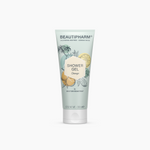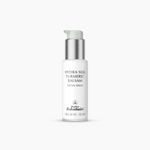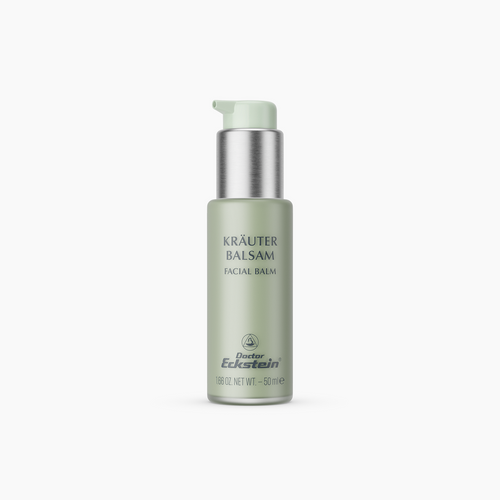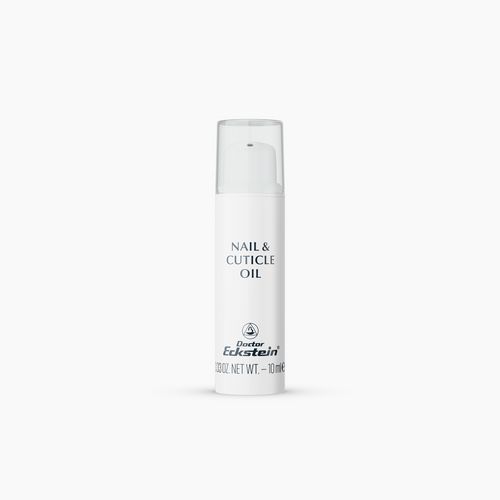Proper cleansing sets the tone for good skin. But too often this step is woefully underestimated. Daily cleansing is just as important to the skin’s appearance as the application of a daily cream. It rids the skin of sebum, dander and grime, which accumulate throughout the day as a film on the skin’s surface. Regular removal is essential.
Proper Cleansing, Step 1
Start with the right product. If you’re using one that doesn’t work for your skin, you’ll notice it getting dry, tight, and irritated.
Here’s some help to get you started: For dry and delicate skin, oil-containing cleansing products are best. For oily skin, reach for a cleansing milk or, better yet, a wash-active cleansing gel. Apply and cleanse using circular movements; Remove with water. Gently pat dry to complete.
Pay attention to water temperature
When cleansing the face, we recommend using lukewarm water. Hot water, as well as over washing, leaches the skin. Use plenty of water to remove the cleansing product but don’t overdue it. The longer the skin is exposed to water, the more stress it causes.
Proper Cleansing, Step 2
Use toner to remove the last residue of cleanser. Toner also helps to balance, refresh and prepare the skin for subsequent steps.
After cleansing comes gentle exfoliation
Besides balm or cream suited to your skin condition, you can achieve a refined and smooth complexion by supporting your skin with a further step. Either use a home peeling product or speak to your esthetician about a skin treatment, for example using enzyme-based exfoliation. An exfoliant is suitable for almost all skin conditions and can be applied under most circumstances. An exception would be sensitive or delicate skin, two conditions that can be easily exacerbated by peels.
When using a mechanical exfoliant, a fine-grained facial peeling is recommended, for example one based on skin-friendly Jojoba wax beads. These intelligent peeling beads give way when the mechanical force becomes too strong. As a result, the peeling is gentle, and an optimal effect is achieved by eliminating excess dead skin. Apply a pea-sized amount to the cleansed skin of the face, neck and décolleté, massage gently with wet fingertips using a circular motion. Remove with plenty of water. The skin will be especially fresh and smooth if the exfoliation is used regularly, about once or twice a week.
Gentle mechanical peels can be supported by targeted care treatment using highly absorbing, low molecular weight moisturizing factors. These molecules penetrate the skin barrier more easily, thereby increasing the moisture content and, consequently, the natural enzyme activity in the skin. Superficial dead skin, or the horny layer (Stratum Corneum), pushes up and can be eliminated to prevent dull looking skin. The best results are obtained when a treatment series is carried out at regular intervals within a skin regeneration cycle of about 28 days.
Conclude each treatment with a toner appropriate for your skin condition, as well as a day or night cream.
Visiting a professional esthetician is money well spent
Your skin really “shows its happy” when you treat yourself to a visit with your esthetician. Is professional skin care new to you? First, the esthetician will talk with you about your skin type and its needs. She will then select an appropriate treatment that in most cases will be tailored to you individually.
A definite highlight of any professional skin care visit is the professional enzyme peeling. Warm moist compresses help optimize the pH of the enzymes for better exfoliation. We should all treat ourselves to this pleasure once a month!
Enzyme peeling is the preferred treatment for blemished skin. It eases the extraction process and aids the skin’s recovery. Treatment results are optimized when carried out at regular intervals within a skin regeneration cycle of about a month.
Wishing you happy skin,
Dr. Verena Eckstein, ND
Disclaimer: The purpose of this blog is to share interesting scientific literature and skin care tips. This blog is not intended to provide diagnosis, treatment or medical advice. Content provided on this blog is for informational purposes only. Please consult with a physician or other healthcare professional regarding any medical or health related diagnosis or treatment options. Information on this blog should not be considered as a substitute for advice from a healthcare professional. The statements made about specific products are not to diagnose, treat, cure or prevent disease.





